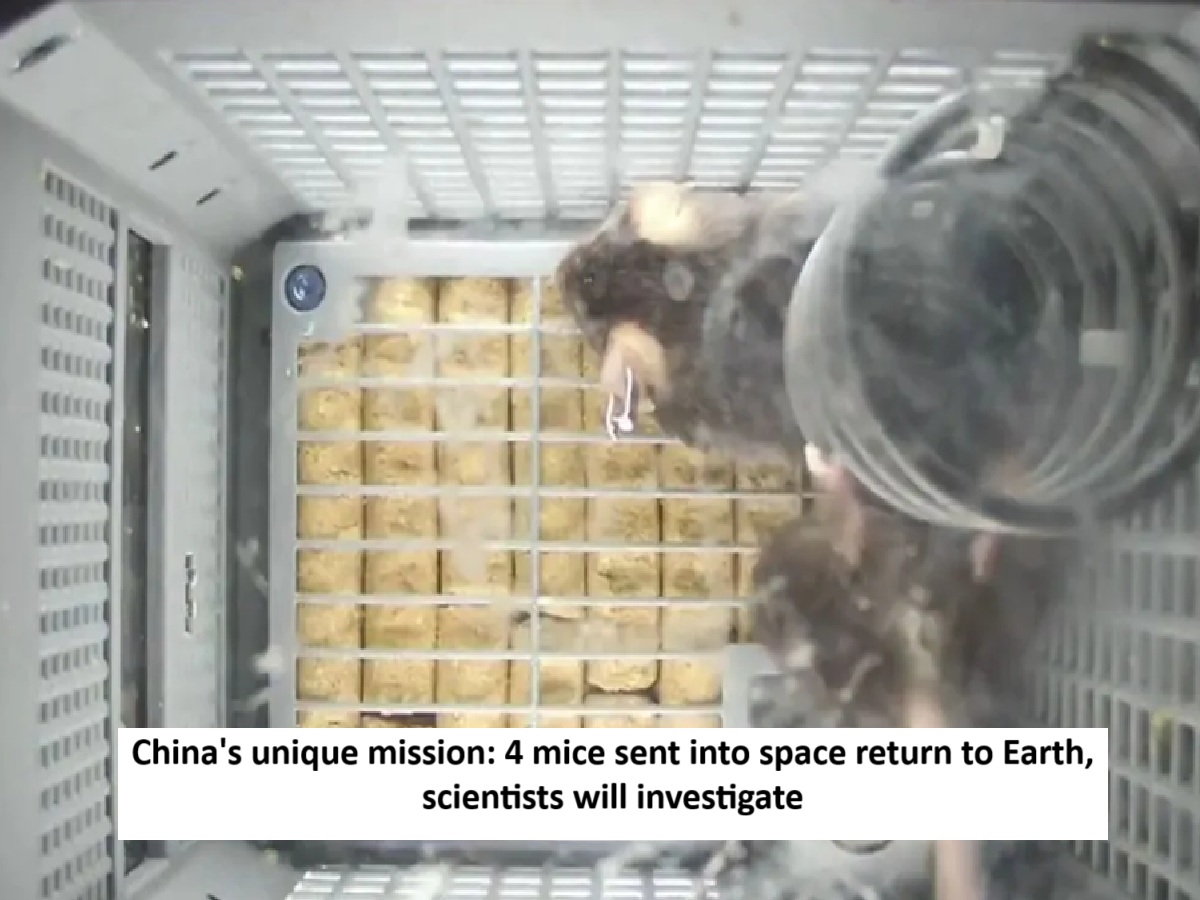
News Topical, Digital Desk : The ninth batch of space science experiment samples, including four mice used in life science experiments, has returned to Beijing's Space Application Engineering Center. The mice were brought back from the China Space Station on Friday by the Shenzhou-21 spacecraft and handed over to Chinese scientists on Saturday morning.
The ninth batch returned by Shenzhou-21 from the China Space Station is considered very special, as it includes four mice, a zebrafish, a planarian, a hornwort, a brain organoid, and the microorganism Streptomyces, according to reports from the Global Times and the Chinese Academy of Sciences. The mice were handled on site after landing.
According to the CAS press release, the returned samples include life science, material science and combustion experiment samples related to 26 experimental projects, including nine types of life experiment samples, 32 types of material experiment samples and three types of combustion science samples, with a total weight of approximately 46.67 kg.
Rats will be tested
According to CAS, researchers will examine the mice's behavior and key physiological and biochemical indicators to conduct a preliminary analysis of the mice's stress response and adaptive changes in the space environment, providing a scientific basis for further understanding its effects on organisms.
Apart from rats, these creatures also came
In addition to the mice, other life science samples such as zebrafish, hornwort, streptomyces, planarian, brain organoids, as well as several materials science and combustion science experiment samples, were delivered to the Space Application Engineering and Technology Center of CAS in Beijing at 0:40 a.m. (local time) on Saturday.
After inspecting the condition of the returned experiment samples, they will be handed over to scientists for further research. The remaining materials science and combustion science experiment samples will later be transported to Beijing via the Shenzhou-21 spacecraft's return capsule.
The research will investigate
Scientists will then conduct transcriptomic sequencing, proteomics analysis, and other biological tests on the returned life science cell samples. This research will investigate how microgravity affects the body at various levels and provide new insights for the prevention and intervention of related diseases by analyzing key biological mechanisms and intervention targets.
After collecting materials science samples such as gasten-hafnium alloys, soft magnetic materials, and relaxor ferroelectric single crystals, scientists will conduct experiments and analysis on the organizational morphology, chemical composition, and distribution differences of the space samples. The research will explore how gravity affects material growth, component segregation, solidification defects, and performance, as well as the service behavior and performance of materials in the special space environment.
According to the Global Times report, these research findings will be helpful in future space applications, including processes for preparing high-performance solar cell protective materials, high-gain radiation-resistant optical fibers, and lunar base construction materials. They will also provide important theoretical basis and technical support for satellite communications and comprehensive space exploration.
Read More: YouTube bans reality show Love Island in Pakistan after controversy erupts
--Advertisement--

 Share
Share



